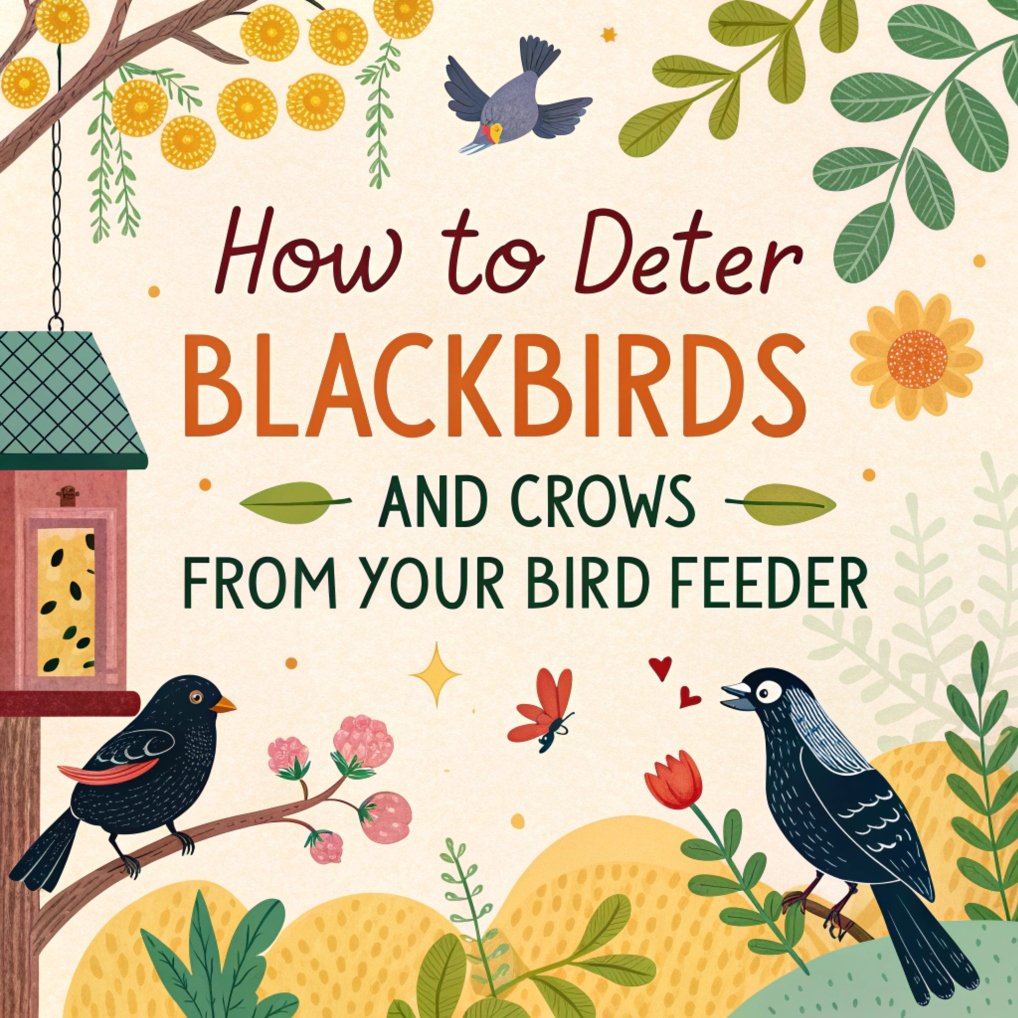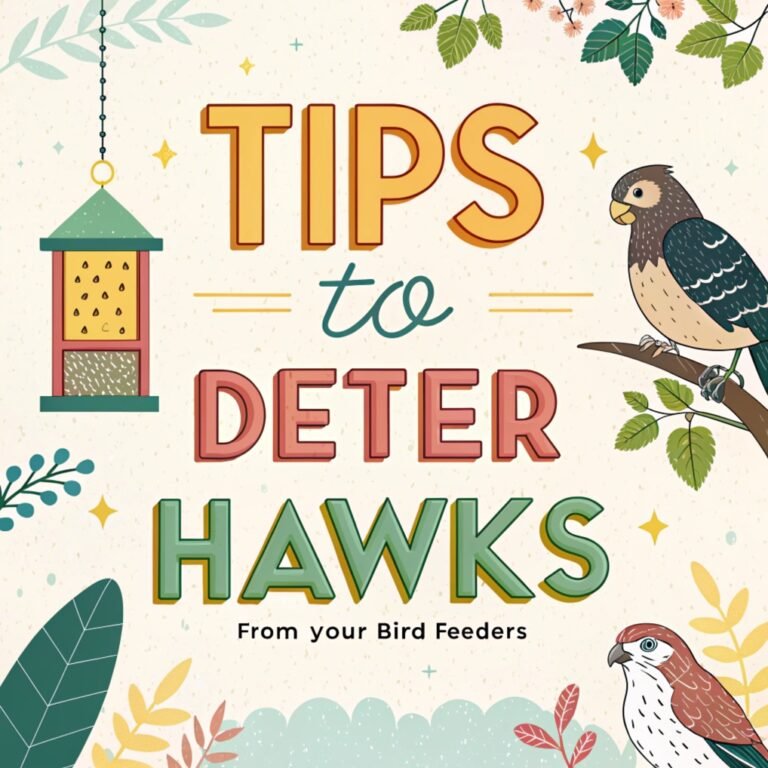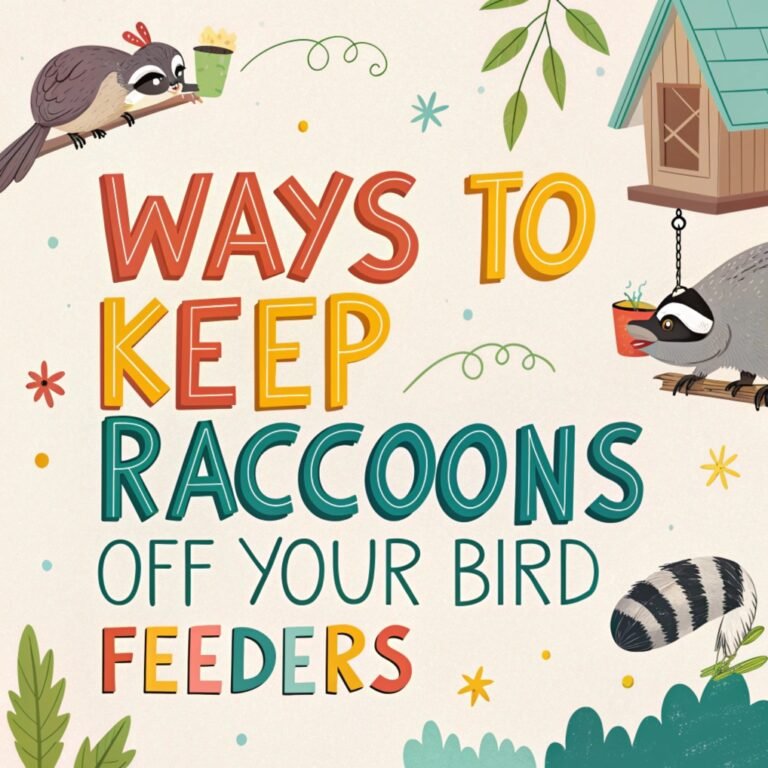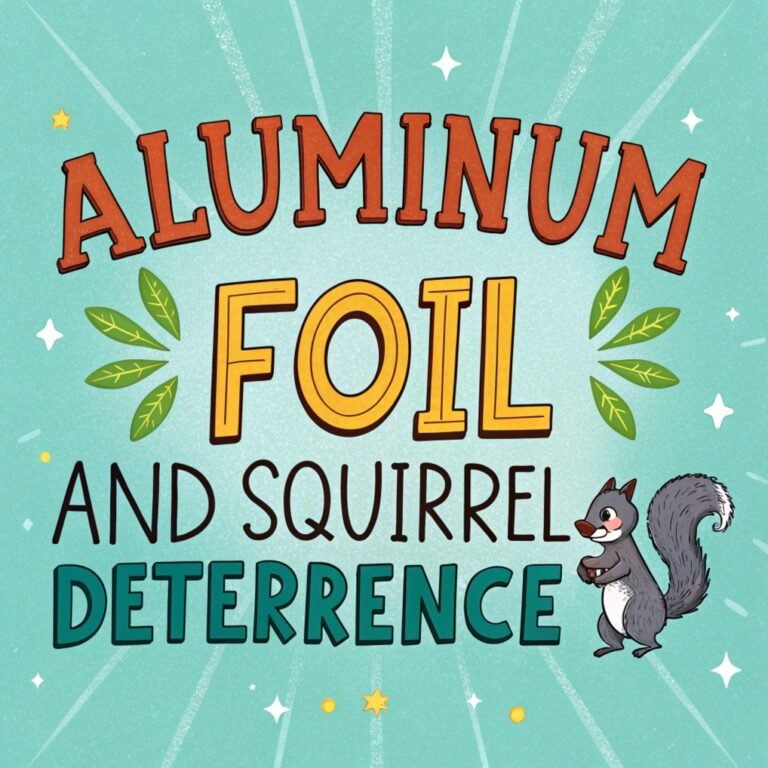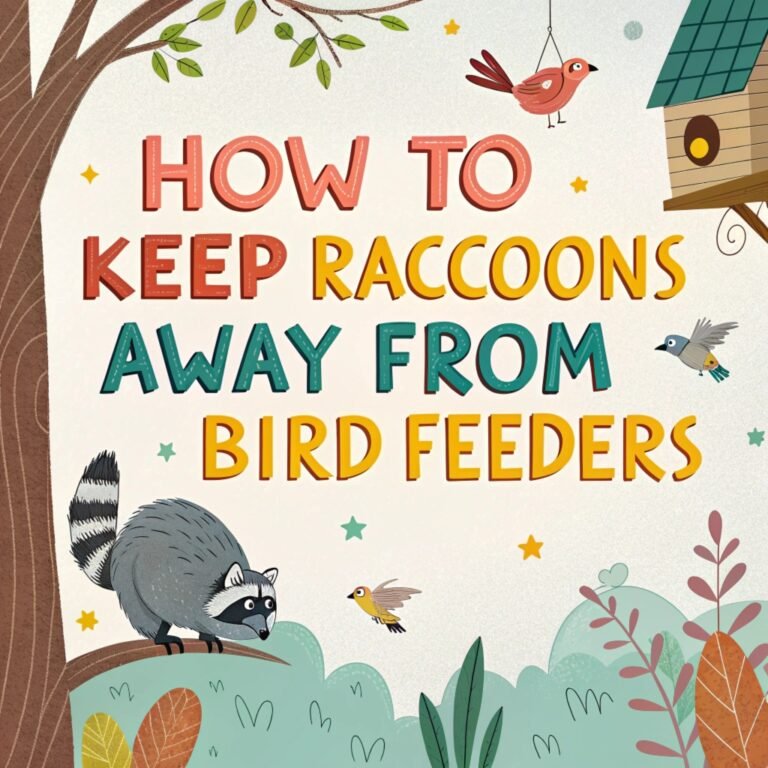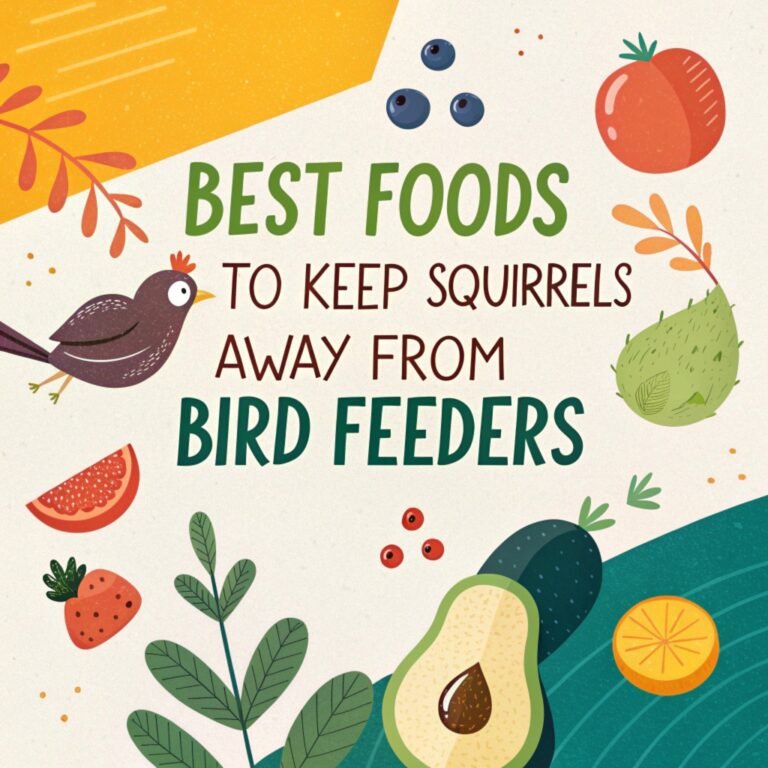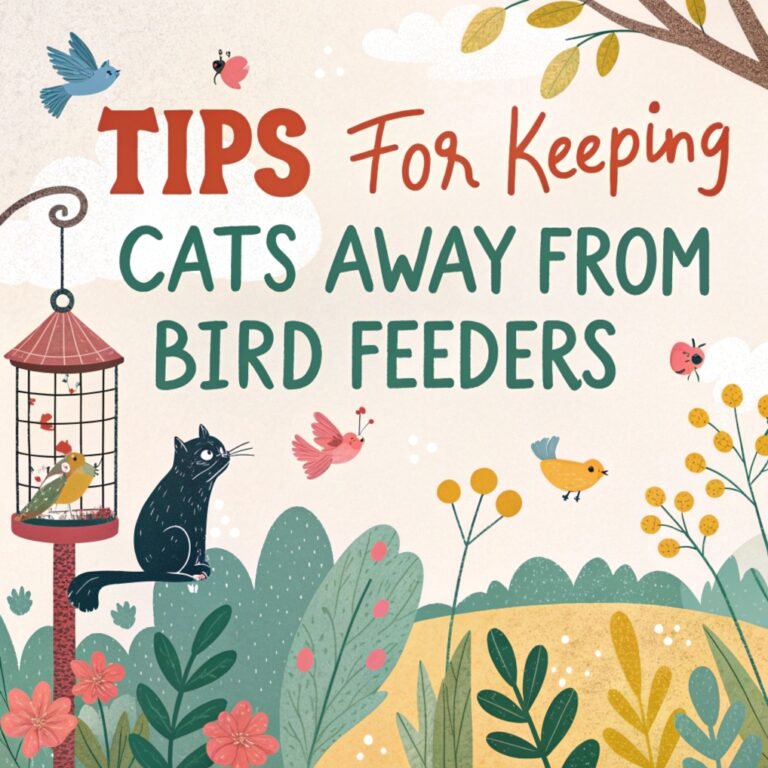How to Deter Blackbirds and Crows from Your Bird Feeder – Protect Your Backyard Birds
Welcome to the ultimate guide on keeping your bird feeders safe from blackbirds and crows.
These intelligent and often pesky birds can dominate your feeders, leaving little for the smaller, more desirable species.
But fear not! With the right strategies, you can enjoy a diverse and vibrant bird population in your backyard.
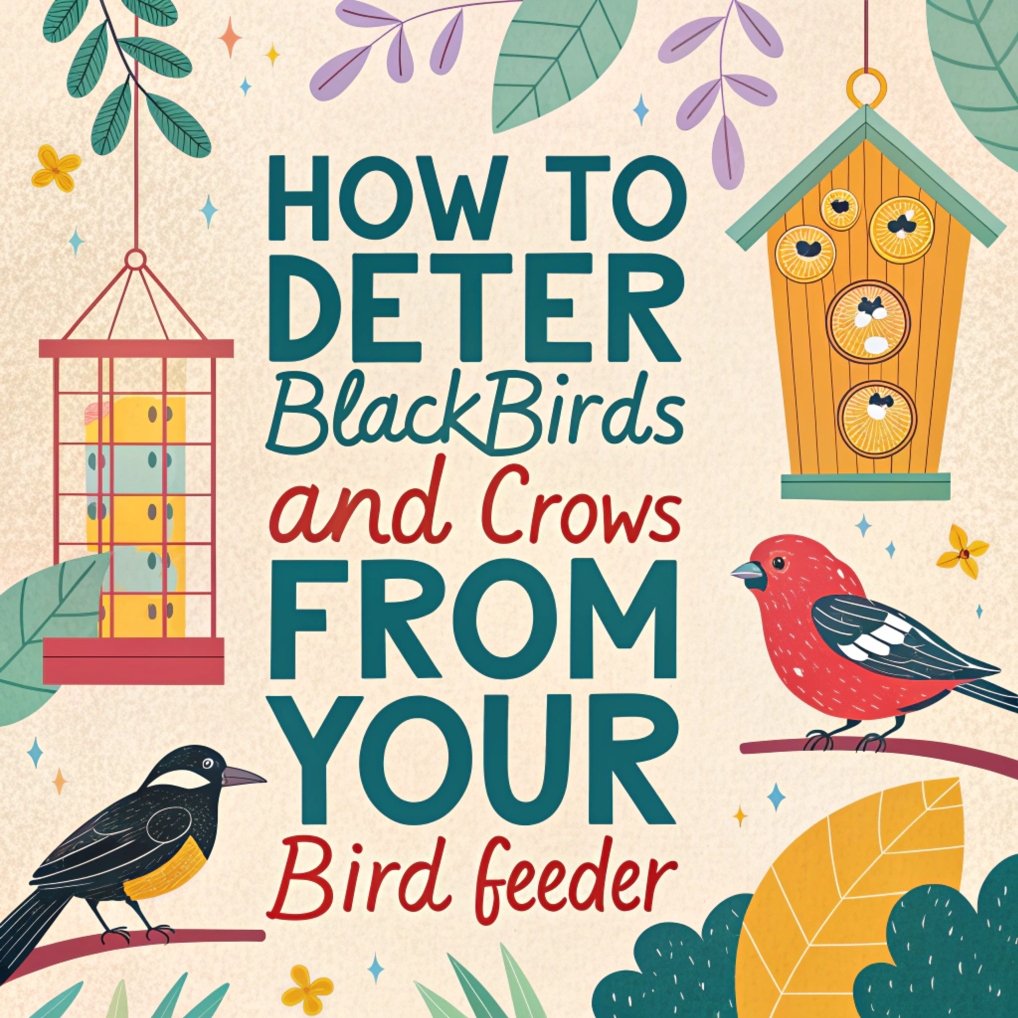
Key Takeaways:
- Choose the right feeder: Opt for designs that limit access to larger birds.
- Select appropriate birdseed: Use seeds that are less appealing to blackbirds and crows.
- Implement physical barriers: Protect your feeders with cages or other deterrents.
- Encourage natural predators: Attract hawks and owls to naturally control bird populations.
- Consider feeder placement: Position feeders strategically to minimize unwanted visitors.
- Use noise and movement: Employ devices that scare away larger birds.
- Collaborate with neighbors: Work together to manage local bird populations effectively.
- Stay informed: Understand bird behavior to improve your feeder’s success.
Understanding the Problem: Why Blackbirds and Crows Dominate Feeders
Blackbirds and crows are intelligent and adaptable birds that can quickly learn to exploit food sources.
Their size and aggressive behavior often allow them to dominate bird feeders, pushing out smaller, more desirable species. These birds are attracted to a wide variety of seeds and can consume large quantities in a short time.
Their presence can discourage other birds from visiting your feeders, reducing the diversity of species in your backyard.
Understanding their behavior is crucial in developing effective strategies to deter them. Blackbirds and crows are often drawn to easily accessible food sources and open feeding areas. They prefer larger seeds and can quickly empty a feeder if left unchecked.
By recognizing these patterns, you can take steps to make your feeders less attractive to these dominant birds while still welcoming a variety of other species.
Choosing the Right Bird Feeder to Deter Larger Birds

Selecting the appropriate bird feeder is a crucial step in deterring blackbirds and crows. Opt for feeders designed to limit access to larger birds while still accommodating smaller species.
Cage-style feeders are particularly effective, as they allow small birds to enter through the openings while keeping larger birds out.
Weight-activated feeders are another excellent option. These clever devices close off access to seed ports when a heavier bird lands on them, effectively shutting out blackbirds and crows. Look for feeders with adjustable tension settings to fine-tune the weight limit.
Tube feeders with short perches or no perches at all can also discourage larger birds, as they find it difficult to maintain their balance.
For suet lovers, consider upside-down suet feeders that cater to clinging birds like woodpeckers but are challenging for blackbirds to use.
Selecting Birdseed That Discourages Blackbirds and Crows
The type of birdseed you offer can significantly impact which birds frequent your feeders. To discourage blackbirds and crows, consider using seeds that are less appealing to these larger birds but still attractive to smaller species.
Safflower seeds are an excellent choice, as many smaller birds enjoy them, but blackbirds and crows typically avoid them.
Another option is to use nyjer seeds (also known as thistle seeds) in specialized tube feeders. These tiny seeds are beloved by finches and other small birds but are generally ignored by larger species.
Striped sunflower seeds can also be effective, as their thick shells make them more difficult for blackbirds to crack open.
Avoid using mixes containing milo, as blackbirds seem to be particularly fond of this seed. Instead, opt for high-quality mixes without filler seeds or consider offering straight seeds like black oil sunflower or safflower.
Using Physical Barriers to Protect Your Feeders
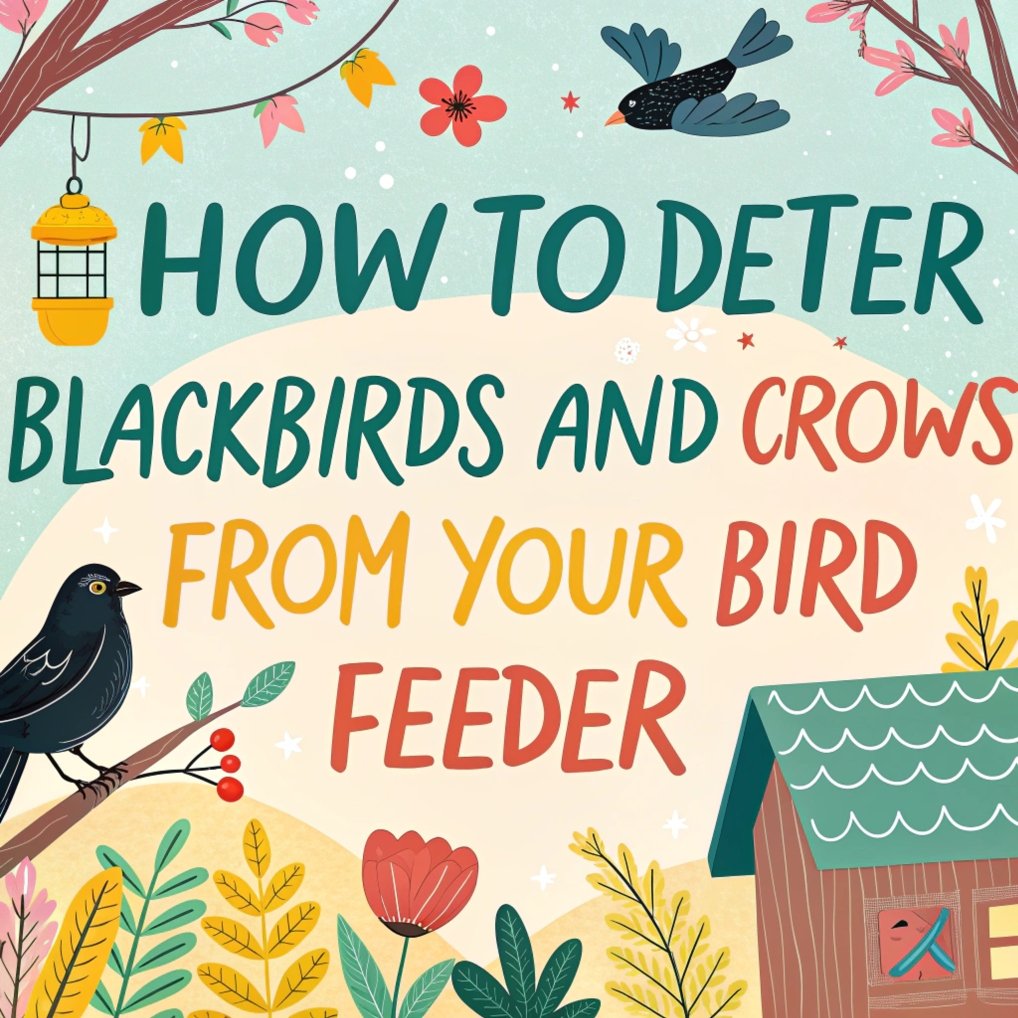
Implementing physical barriers is an effective strategy to keep blackbirds and crows away from your feeders.
One popular method is to use caged feeders or to add a cage around existing feeders. These cages have openings large enough for small birds to enter but too small for larger birds to squeeze through.
For platform or tray feeders, consider adding a dome or baffle above the feeder. This not only protects the seed from rain but also makes it difficult for larger birds to access the food.
Ensure the dome is positioned at the right height to allow smaller birds to feed comfortably while deterring larger ones.
Another option is to use wire mesh or hardware cloth to create custom barriers around your feeders. This DIY approach allows you to tailor the protection to your specific feeder setup.
Remember to leave enough space between the mesh and the feeder for small birds to access the food comfortably.
Creating a Bird-Friendly Environment Without Inviting Pests
While deterring blackbirds and crows, it’s important to maintain an environment that’s welcoming to other bird species.
Start by providing a variety of feeding stations to cater to different bird preferences. Include a mix of tube feeders, platform feeders, and specialized feeders like those for nyjer seeds or suet.
Incorporate natural food sources by planting native trees, shrubs, and flowers that produce berries or seeds.
This not only provides additional food but also creates shelter and nesting sites for birds. Consider adding a water source, such as a birdbath or small fountain, to attract a wider variety of birds.
Keep your feeding area clean by regularly removing fallen seeds and hulls. This helps prevent the buildup of mold and bacteria, which can be harmful to birds. It also reduces the attraction for ground-feeding blackbirds and crows.
By creating a diverse and healthy environment, you’ll encourage a wide range of bird species while minimizing the dominance of any single type.
The Role of Noise and Movement in Deterring Unwanted Birds
Utilizing noise and movement can be an effective deterrent for blackbirds and crows. These birds are naturally wary of potential threats and can be discouraged by unexpected sounds or motions.
Consider installing wind chimes or hanging reflective objects like old CDs or aluminum pie plates near your feeders. The random movements and sounds created by these items can make blackbirds and crows uncomfortable.
Visual deterrents such as predator decoys can also be effective. Owl or hawk figurines placed strategically around your yard can create the illusion of danger for larger birds.
However, it’s important to move these decoys regularly, as intelligent birds like crows may quickly realize they’re not real if left in the same spot.
For a more high-tech solution, consider motion-activated sprinklers or noise makers. These devices can startle birds when they approach, making your feeding area less appealing to them.
Remember to use these methods sparingly and rotate them to prevent birds from becoming accustomed to them.
Natural Predators: Encouraging Hawks and Owls
Encouraging the presence of natural predators like hawks and owls can help control populations of blackbirds and crows.
While you can’t directly invite these raptors to your yard, you can create an environment that’s attractive to them. Provide perching spots such as tall poles or dead tree limbs where hawks can survey the area.
Maintain some open areas in your yard, as raptors prefer hunting in spaces where they can easily spot and pursue prey.
Avoid using pesticides, as these can reduce the population of small mammals and insects that raptors feed on.
Consider installing nesting boxes specifically designed for owls. Different owl species prefer different types of boxes, so research which species are native to your area.
Remember that attracting raptors means they may occasionally prey on smaller birds as well, so it’s important to provide plenty of cover and shelter for your songbirds.
The Importance of Feeder Placement in Bird Control
The strategic placement of your bird feeders can play a crucial role in deterring blackbirds and crows while attracting other species.
Position your feeders in areas that are less accessible or comfortable for larger birds. For instance, place feeders closer to your house or in areas with more cover, as smaller birds often feel safer in these locations.
Avoid placing feeders in open areas or near large trees where crows and blackbirds prefer to perch. Instead, position them near shrubs or smaller trees that provide quick escape routes for smaller birds.
Consider hanging feeders at different heights to cater to various bird species’ preferences.
Experiment with multiple feeding stations spread around your yard. This can help prevent any one area from becoming dominated by larger birds and allows more timid species to find a comfortable spot to feed.
Seasonal Strategies for Managing Bird Feeder Visitors
Bird feeding habits and populations can vary significantly with the seasons, so it’s important to adapt your strategies throughout the year.
In spring and summer, when natural food sources are more abundant, you may find fewer blackbirds and crows at your feeders.
This is a good time to reduce the amount of seed you put out, focusing on high-quality options that attract desirable species.
During fall migration, you might see an influx of various bird species, including blackbirds. Be prepared to implement additional deterrent methods during this time.
In winter, when food is scarce, competition at feeders can intensify. This is when your selective feeding strategies become most crucial.
Consider changing your seed types seasonally. For example, you might offer more nyjer seeds in winter to attract finches, or increase the proportion of safflower seeds when blackbirds are more prevalent.
Always be observant of the birds visiting your feeders and be ready to adjust your approach as needed.
Community Solutions: Working with Neighbors to Manage Bird Populations
Managing bird populations, especially larger species like blackbirds and crows, can be more effective when approached as a community effort.
Start by discussing the issue with your neighbors who also feed birds. Share your strategies and experiences, and consider coordinating your efforts.
Encourage your neighbors to adopt similar feeding practices, such as using caged feeders or offering seeds less attractive to blackbirds and crows.
By creating a larger area where these birds find it difficult to feed, you can more effectively discourage them from dominating the neighborhood.
Consider organizing a community bird-watching event or workshop to educate others about responsible bird feeding and the importance of maintaining a diverse bird population.
This can help build interest and support for your efforts. Remember, a unified approach can lead to more successful and sustainable bird management in your area.
Understanding Bird Behavior to Improve Feeder Success
To effectively manage your bird feeders, it’s crucial to understand the behavior of both the birds you want to attract and those you’re trying to deter.
Blackbirds and crows are highly intelligent and social birds. They often feed in groups and can quickly communicate the location of food sources to others.
Observe the feeding patterns of different bird species in your yard. Notice which birds prefer to feed on the ground, which are comfortable on hanging feeders, and which times of day different species are most active.
This knowledge can help you tailor your feeding strategy to favor desired species.
Pay attention to the hierarchies that develop among birds at your feeders. Some species are naturally more dominant, while others are more timid.
By providing a variety of feeding options, you can cater to different species’ preferences and behaviors, ensuring that even shy birds have access to food.
Innovative Technologies for Bird Feeder Management
As bird feeding grows in popularity, new technologies are emerging to help manage feeders more effectively.
Smart feeders equipped with cameras and weight sensors can provide valuable data about the types and numbers of birds visiting your feeders. Some can even be programmed to close access when they detect larger birds.
Motion-activated devices are becoming more sophisticated, with some able to distinguish between different bird sizes and activate deterrents only for larger species.
These can include water sprayers, sounds, or lights that startle unwanted birds without disturbing smaller species.
Consider using bird feeding apps that allow you to track and share information about bird sightings in your area.
This community-sourced data can help you understand local bird populations and migration patterns, allowing you to adjust your feeding strategies accordingly.
Balancing Bird Diversity: Attracting Desired Species
While deterring blackbirds and crows is important, the ultimate goal is to create a diverse and balanced bird population in your yard.
Focus on attracting a variety of species by offering different types of food and feeder styles. For example, nectar feeders can attract hummingbirds, while suet cakes are favored by woodpeckers.
Plant a variety of native plants that provide natural food sources throughout the year. Berry-producing shrubs, seed-bearing flowers, and trees with nuts can all contribute to a well-rounded bird habitat. This not only provides food but also creates shelter and nesting sites.
Remember to provide fresh water sources, which can attract a wide range of birds, including those that may not visit seed feeders.
A shallow birdbath with moving water is particularly attractive to many species. By creating a diverse and welcoming environment, you can enjoy a rich variety of bird life while minimizing the impact of more dominant species.
FAQs
What are the most effective types of bird feeders to deter blackbirds and crows?
The most effective feeders are caged feeders, weight-activated feeders, and those with short perches or no perches. These designs make it difficult for larger birds to access the food while allowing smaller birds to feed comfortably.
Can changing the type of birdseed really help deter blackbirds and crows?
Yes, it can be very effective. Safflower seeds and nyjer seeds are less appealing to blackbirds and crows but are enjoyed by many smaller bird species. Avoiding mixes with milo and using striped sunflower seeds can also help.
How can I attract natural predators to help control blackbird and crow populations?
Provide perching spots for hawks, maintain some open areas in your yard, and consider installing owl nesting boxes. Creating an environment that supports a healthy ecosystem can naturally help balance bird populations.
Are there any technological solutions available for managing bird feeders?
Yes, there are smart feeders with cameras and weight sensors, as well as motion-activated deterrent devices. These can help you monitor and manage which birds access your feeders.
How important is feeder placement in deterring unwanted birds?
Feeder placement is crucial. Positioning feeders near cover, closer to your house, and away from open areas can make them less attractive to blackbirds and crows while still accessible to smaller birds.

Hello, I’m Amelia White, the founder of birdsfanatic.com. As a lifelong bird enthusiast and spiritual seeker, I’ve always been fascinated by the mystical connections between birds and the human experience. On this site, I share my knowledge and insights into the symbolic meanings and spiritual significance of various bird species, exploring their roles in mythology, folklore, and cultural traditions. Join me on this journey into the world of birds, where we’ll discover the hidden wisdom and guidance that these magnificent creatures have to offer.

